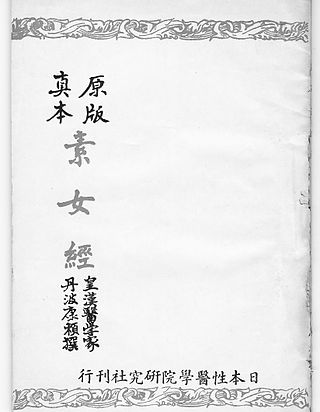Top Qs
Timeline
Chat
Perspective
Su Nü Jing
Taoist sexology book From Wikipedia, the free encyclopedia
Remove ads
Sunü-jing "Classic of the Pure Woman" (Chinese: 素女經), is a Chinese sexology book written before the Han dynasty. It belongs to the Chinese classics and presents the Taoist sexual practices.[1] According to this religious tradition, the book is said to have been written by the goddess Sunü in the time of the Yellow Emperor.

History
In China, this book was lost after Tang dynasty (~907 AD). However, copies of the text were collected in Japan in the Ishinpō of Tamba Yasara (醫心方), published in 982, and the current edition of the Sunü-jing is the version taken from the collection of Yasara.[2]
Supposedly, there were three goddesses in the era of the Yellow Emperor: Sunü, Jiutian Xuannü, and Cainü; the three sisters taught the Emperor Daoist sexual practices and theory of sex, and practiced physically with him. Among them, Sunü was good at music and is the author of the Sunü-jing.
Remove ads
Content
The whole book can be divided into two parts. One part talks about the methods of sexual intercourse. There are 24 tricks in "Seven Losses", "Eight Benefits" and "Nine Methods"; the other parts are about flirting skills, Five Signs, Five Desires, and Ten Movements. The explanations for both men and women are very straightforward.
This book mainly is about Taoist sexual practices and health precautions. It teaches sex positions, skills, seasons and sex, psychology, pregnancy method, sexology theory and various other subjects.[2] Among them, "philharmonic"? is mentioned, and it is advocated that both men and women shall agree to make love, otherwise it is harmful to the body.[3]
Remove ads
References
External links
Wikiwand - on
Seamless Wikipedia browsing. On steroids.
Remove ads
